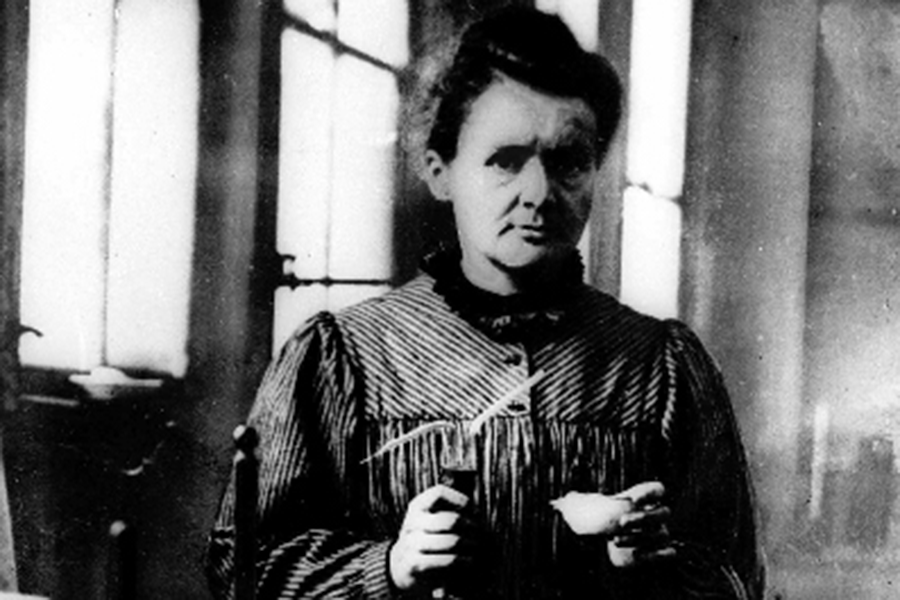What advice did Albert Einstein give to Marie Curie?
Loading...
Marie Curie was the first woman to win a Nobel Prize and the only woman to win the award in two different fields (physics and chemistry), but when she tried to vie for a position against a man she fell victim to trolls of her day, whom her ally Albert Einstein referred to as “reptiles” in a powerful letter of support for the besieged female scientist.
It was known as The Curie Scandal and it lasted for three years, from 1910 to 1913, as the result of the female scientist’s attempt to win a coveted scientific post over male rival Edouard Branly, according to the American Institute of Physics.
In November 1910, Curie put herself forward as a candidate for the single vacant seat for a physicist in the French Academy of Sciences. Mr. Branly’s contribution in science was to wireless telegraphy, according to the AIP site.
Before she applied for the position, much of the media attention surrounding Marie Curie (born Maria Sklodowska, November 7, 1867, in Warsaw, Poland) was positive, extolling the virtues of the then-38-year-old widowed mother, according to both Biography and the AIP.
Curie's work, with her husband Pierre Curie, led to the discovery of polonium (named for her native Poland) and radium and, after her husband’s death, the development of X-rays.
However, Branly’s right-wing supporters in the media spread rumors that Curie was Jewish, which at the time in France was anathema due to the politics of the day.
When Curie failed to back down, a second scandal, this time about her romance with married fellow scientist Paul Langevin formed a second, more devastating wave of public attacks on Curie.
Enter an irate Albert Einstein, who in 1911 was so troubled by the media attacks on Curie he was moved to write to her from Brussels to tell her how much he valued her as a colleague. Einstein referred to her critics as “reptiles.”
This week Astrobiologist David Grinspoon has placed that letter and a host of other papers written by Einstein in a cache of Einstein’s letters which are on online for public view.
Dr. Camellia Okpodu, Professor of Biology who now directs the Norfolk State University Intelligence Community Center in Norfolk, Virginia says that what Curie suffered in her day has in no way diminished for women toiling in the STEM fields of 2014.
“I have what you might call a double-whammy being both a person of color and a woman,” Okpodu said in a phone interview. “Maybe it’s part of being a scientist, but [others] seem to have to peg you and put you in a box and classify you.”
Okpodu reeled off half a dozen incidents with male colleagues in which she was told that being a woman meant she was “expected to be sugar and spice and everything nice, and never tell the people I was supposed to be guiding that they had made an error if they were male.”
“I had a recommendation letter written for me for my PhD in which the male scientist said I needed to decide if I should be a woman who wanted to be married and have a child (which I did) or a scientist,” she said. “Science is still a very elite club and once you are in you don’t want to let anyone else in there with you. That’s how it was and is for the most part today.”
Okpodu said she’s not at all surprised to learn that Einstein came out in support of Curie since he had once made the bold move of teaching a physics class at Lincoln University in Pennsylvania, a historically black school, in 1946, according to the Lincoln University Library.
"The separation of the races is not a disease of colored people. It is a disease of white people. I do not intend to be quiet about it," Einstein is quoted as having said of his decision to teach at Lincoln U.
Okpodu adds, “I was always prepared to be discriminated against for my skin color, but when I discovered the discrimination was greater for my gender, that floored me.”
“I went to see Nobel Prize Winner James Watson speak at a Brookhaven seminar and was shocked when he said his colleague Rosaline Franklin was unattractive,” Okpodu recalls. “He and [Francis] Crick and Franklin worked together on the DNA project, it was her research as much as theirs and yet they won the Nobel and she was not given credit.”
According to the website Chem Heritage, in 1962 James Watson, Francis Crick and Maurice Wilkins jointly received the Nobel Prize in physiology or medicine for their 1953 determination of the structure of deoxyribonucleic acid (DNA).
“Wilkins’s colleague Rosalind Franklin (1920–1958), who died of cancer at the age of 37, was not so honored because the Nobel Prize can only be shared by three scientists,” according to the website.
Okpodu adds, “While it’s one thing to have died and not been able to share in the prize, it is quite something else to have your colleagues not only fail to credit you at a lecture, but to find the only thing they can say about a female scientist whose work they relied on is that she was ugly.”








